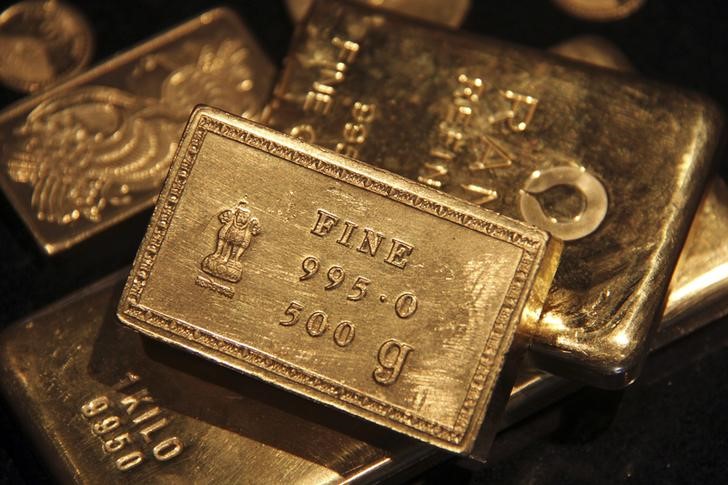Investing.com — Gold futures popped above $2,000 an ounce on Thursday, the first time in two weeks, and settled not far from there as the yellow metal looked poised for its best weekly return since March as the dollar tumbled on weaker U.S. employment and manufacturing data that suggested a rate hike pause in the next two weeks.
on New York’s Comex settled at $1,995.50 an ounce, up $13.40, or 0.7%, on the day. The benchmark gold futures hit a two-week high of $2,000.65 earlier. For the week, gold is looking at a return of 2.6%, its most since the week to March 10.
The , which reflects physical trades in bullion and is more closely followed than futures by some traders, was at $1,976.39 by 14:53 ET (18:53 GMT), up $13.72 or 0.7% on the day. Spot gold got to as high as $1,983.17 earlier in the session.
The , which pits the U.S. currency against six competing majors, had its biggest one-day tumble since March 10, falling 0.7%, to a session low of 103.435. The drop came after an industry report showed layoffs in the U.S. tech, retail and auto sectors surged last month as overall hirings came in at the lowest since 2016.
The data by employment tracker Challenger, Gray & Christmas, Inc offered an alternative view to the notion that the labor market was still too strong and feeding inflation persistently. It could influence the Federal Reserve to look the other way instead of raising rates for an 11th time in 16 months when the central bank’s policy-makers sit on June 14.
The dollar also fell as Patrick Timothy Harker, one of the Fed policymakers and its president for the region of Philadelphia, said on Thursday the central bank “should at least skip raising rates in June.”
All eyes — at least on the gold market — are now on Friday’s report for May. The Fed has identified runaway jobs and wage growth since the worst of the COVID-19 breakout three years ago as among the principal reasons for some of the worst U.S. in 40 years.
Economists are projecting a growth of 180,000 for May’s non-farm payrolls report, versus April’s 253,000. Any figure below 200,0000 reported by the Labor Department would be viewed as dollar-negative and gold-positive.
“Gold prices are enjoying some soft U.S. data that is bringing down those Fed rate hike odds,” said Ed Moya, analyst at online trading platform OANDA. “If the U.S. jobs report doesn’t impress, that could be the catalyst that takes gold back above the $2,000 level.”
Read the full article here








